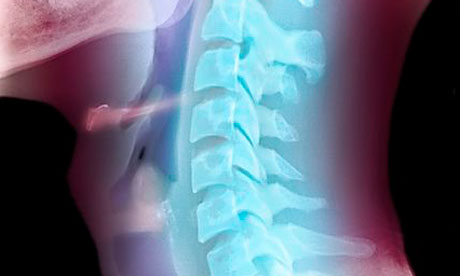
The hyoid is the only bone in the throat. It is also the single bone in the body that doesn't connect directly with any others, being anchored instead by ligaments and muscles. It is composed of a central portion called the body, flanked on each side by the greater and lesser cornu. If you run your finger backwards from your chin to the point where your head meets your neck and press gently, you will be able to feel the resistance of your own hyoid bone.
One of its functions is to anchor the back of the tongue while the rest is free to move. For this reason, it plays a crucial role in speech and swallowing. The hyoid also protects the fragile tissues of the larynx and pharynx.
Although the hyoid doesn't often get seriously injured, it may break after trauma to the neck. It is a macabre statistic that in a postmortem study of a group of people murdered by strangulation, one third of victims were found to have fractured hyoids.
But most head-and-neck surgeons come into contact with the hyoid bone while performing something known as a Sistrunk's operation. During embryological development, the thyroid gland starts life at the back of the tongue before finding its correct position in the neck. In some people, there is an abnormal remnant of this early journey, known as a thyroglossal duct. Cysts may develop anywhere along its course and appear as a painless lump in the mid line of the neck. Surgical removal is the best treatment and, in order to prevent recurrence, it is necessary to cut out a core of tissue running from the base of the tongue to the thyroid, including the central portion of the hyoid bone.
Gabriel Weston is a surgeon and author of Direct Red: A Surgeon's Story.

